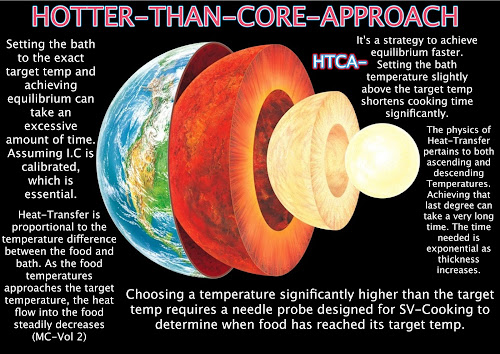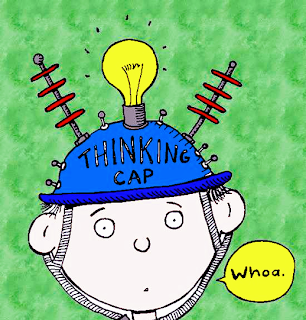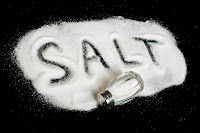Time to Temp? Can you tell which one is which?

One thing that genuinely disappoints me is mindless absolutes concerning food. Food Absolutism meaning that there is only one way to think and cook. Authenticism beliefs and principals diminish what we love to do. We've all met these virtuous people, that mostly exist behind their cloaked keyboards of anonymity. You know the saying, "That's not authentic or accurate". The folly of legitimacy is mostly about someone's interpretation or understanding. Authenticity is an attempt to regulate one's opinion as fact. What're the criteria to judge what is real and what is fake. One's sincerity is not enough, and the notion that there is the only way to do something permeates our sense of right and wrong.


The prompting for this Blog-post comes from a place of annoyance. People will often post suggestions for Time (I don't care about the temps) and often never consider the thickness of the protein. Temperature choice is generally not a concern because that's a personal preference.
 Many posters (Not All), after referring them to proven trustworthy DATA (Baldwins Tables), will continue to argue their feeble points. I am aghast at what people believe and what they preach to be the absolute truth. It often happens in Facebook Food Groups I, admin, which are many. These experts will give out Time and Temperature Tips for the Perfect Steak, which we all know, is very subjective. I don't care if you like it well done or rare as long as you give out reliable information. When I've attempted to engage in civil discourse, the standard retort, which I've come to expect, is..." I've been doing it this way for umpteen years, and it always comes out great". These falsehoods are perpetuated over and over again. I've decided to forgo rational conversation and use Datapoints and Pictures. Do you know what they say? Facts don't care about your feelings. A picture is worth a thousand words, and Data is worth even more.
Many posters (Not All), after referring them to proven trustworthy DATA (Baldwins Tables), will continue to argue their feeble points. I am aghast at what people believe and what they preach to be the absolute truth. It often happens in Facebook Food Groups I, admin, which are many. These experts will give out Time and Temperature Tips for the Perfect Steak, which we all know, is very subjective. I don't care if you like it well done or rare as long as you give out reliable information. When I've attempted to engage in civil discourse, the standard retort, which I've come to expect, is..." I've been doing it this way for umpteen years, and it always comes out great". These falsehoods are perpetuated over and over again. I've decided to forgo rational conversation and use Datapoints and Pictures. Do you know what they say? Facts don't care about your feelings. A picture is worth a thousand words, and Data is worth even more.
However, Temperature can be an issue at times. How can Temperature be an issue if doneness is subjective? Maybe not understanding what it takes to bring a protein to a state of equilibrium.
Example- A buddy of mine purchased an I.C. on my recommendation and decided to make a steak (NY-Strip) on his first Time out. The APP suggested 129f for 2-Hours. He chose 129f based on the picture supplied in the APP. The NY-Strip was 2-Inches thick, if not slightly bigger, and the APP gave no guidance on thickness. Why is this important? The steak came out blueish, meaning around 125f-ish, I think, based on the pics he sent me. In this specific instance, the Temp was more than ample, but the Time given was inadequate. Some people that may not know any better might think that increasing the Temperature higher would solve his problem.
Yes, increasing the temperature would solve the problem if using the method "Hotter than Core Approach," but the majority of us don't Sous-Vide-Process this way or, for that matter, understand this technique. Hotter than Core Approach is another method that is practiced at some restaurants and Sous-Vide enthusiasts, but it's not the norm for most people. This method is described in detail in the Modernist-Cuisine Books.
My suggestion is not to use apps. They are not always reliable. If you are not using Sous-Vide probes like I do, my go-to is Dr. Douglas Baldwins Tables. His tables are incredibly reliable. I would also suggest reading his book from cover to cover, including his footnotes. I wrote an article covering apps and how fallible they are HERE.
Had my buddy consulted Baldwins Tables, he would have seen that the Time to Temp Suggestion is 03:30:00.
Recently I saw a post that was similar to my buddies issue, and some suggested increasing the temp. After having a conversation with several members, I knew it was falling on deaf ears. One person posted a pic of his protein and gave it accolades because it was perfectly cooked at 131f for 2-hours. It looked more like 127-128f. I surmised this temp based on my experience and previous cook with probes. Most of us cannot tell the difference within a few degrees based on what a protein looks like. And let's not forget that searing methods have an impact on final internal temp depending on your methods. These two links will explain more Shocking? & Pre-Sear. Attempting to distinguish one temp from another is futile if you have nothing to compare it too. Maybe having two identical steaks sitting side by side, one might be able to distinguish two temps, but doubtful if within a few degrees.
ANSWERS & FINAL THOUGHTS
 It's been about a week since I posted the above challenge, and there were very few takers. Most don't like to admit they are wrong, and frankly, I don't blame them because this was no easy task. Even if I had placed the protein directly in front, I doubt anyone would have been able to guess the Internal Temperature. So what was the point of all of this? It was to show you all that we cannot rely on our eyes to distinguish the internal temperatures of proteins.
It's been about a week since I posted the above challenge, and there were very few takers. Most don't like to admit they are wrong, and frankly, I don't blame them because this was no easy task. Even if I had placed the protein directly in front, I doubt anyone would have been able to guess the Internal Temperature. So what was the point of all of this? It was to show you all that we cannot rely on our eyes to distinguish the internal temperatures of proteins.
These final thoughts are a good summation of my overall thoughts.
As an Admin in so many groups, I've seen poor advice given out, which prompted this post. I'll use the 59mm to illustrate my point. The poster cooks the 59mm at 133f and posts his results but tells everyone that he loved it, but his wife would like it less pink. Everyone jumps on the bandwagon and suggests he increase the temp to 135f-136f. Does this solve the problem? Yes, it does if you were using the Hotter-than-Core-Approach, but most of us cook to equilibrium. Here is the problem though. The poster does not understand what happened, and the next time he prepares a thinner steak, it will be overcooked. The progression of imperfect information will continue, and no one will be the wiser.
Example- A buddy of mine purchased an I.C. on my recommendation and decided to make a steak (NY-Strip) on his first Time out. The APP suggested 129f for 2-Hours. He chose 129f based on the picture supplied in the APP. The NY-Strip was 2-Inches thick, if not slightly bigger, and the APP gave no guidance on thickness. Why is this important? The steak came out blueish, meaning around 125f-ish, I think, based on the pics he sent me. In this specific instance, the Temp was more than ample, but the Time given was inadequate. Some people that may not know any better might think that increasing the Temperature higher would solve his problem.
Yes, increasing the temperature would solve the problem if using the method "Hotter than Core Approach," but the majority of us don't Sous-Vide-Process this way or, for that matter, understand this technique. Hotter than Core Approach is another method that is practiced at some restaurants and Sous-Vide enthusiasts, but it's not the norm for most people. This method is described in detail in the Modernist-Cuisine Books.
My suggestion is not to use apps. They are not always reliable. If you are not using Sous-Vide probes like I do, my go-to is Dr. Douglas Baldwins Tables. His tables are incredibly reliable. I would also suggest reading his book from cover to cover, including his footnotes. I wrote an article covering apps and how fallible they are HERE.
Had my buddy consulted Baldwins Tables, he would have seen that the Time to Temp Suggestion is 03:30:00.
Recently I saw a post that was similar to my buddies issue, and some suggested increasing the temp. After having a conversation with several members, I knew it was falling on deaf ears. One person posted a pic of his protein and gave it accolades because it was perfectly cooked at 131f for 2-hours. It looked more like 127-128f. I surmised this temp based on my experience and previous cook with probes. Most of us cannot tell the difference within a few degrees based on what a protein looks like. And let's not forget that searing methods have an impact on final internal temp depending on your methods. These two links will explain more Shocking? & Pre-Sear. Attempting to distinguish one temp from another is futile if you have nothing to compare it too. Maybe having two identical steaks sitting side by side, one might be able to distinguish two temps, but doubtful if within a few degrees.
This post is a challenge to anyone that thinks they have that keen eye for identifying doneness. This photo is a collage of proteins that range from Ribeyes, NY-Strips, Tri-tips, etc. I would like you to guess the doneness based on the pictures. Several proteins have the same temp... Hint Hint. Match the protein Number with the Letter in the chart below. I would like you to guess the doneness based on the pictures. Some of these proteins are choice, and some are prime, which can impact your guess.
I realize that guessing a temp from a picture is hard. The proteins are photographed in my kitchen with natural full spectrum lightbulbs. The photos are with no additional editing. Guessing the internal temp of a protein is no easy task. Each animal is unique. Knowing your product is a good starting point for most, but it has to go beyond that. Contrasting Grain-fed vs. pasture-raised is a must. The grade of beef plays a significant role in determining Time & Temp, which is why I've included both. I've found that Prime Cooks up differently than Choice as well as Wagyu A5 And Amenercain Wagyu. Many many variables can influence the color of the meat, which is the point of this post. Myoglobin percentages are different from cut to cut and animal to animal. Mere observation is not enough to discern internal Temperature. Time to Temperature in the Sous-Vide world (other than pasteurization) is essential.
ANSWERS & FINAL THOUGHTS
 |
| Click to enlarge photo |
 It's been about a week since I posted the above challenge, and there were very few takers. Most don't like to admit they are wrong, and frankly, I don't blame them because this was no easy task. Even if I had placed the protein directly in front, I doubt anyone would have been able to guess the Internal Temperature. So what was the point of all of this? It was to show you all that we cannot rely on our eyes to distinguish the internal temperatures of proteins.
It's been about a week since I posted the above challenge, and there were very few takers. Most don't like to admit they are wrong, and frankly, I don't blame them because this was no easy task. Even if I had placed the protein directly in front, I doubt anyone would have been able to guess the Internal Temperature. So what was the point of all of this? It was to show you all that we cannot rely on our eyes to distinguish the internal temperatures of proteins.
Deciding how long to process a protein to reach a state of equilibrium is relatively easy to figure out, provided you know a few things. How thick is the protein? The thickness of the protein will determine how long you need to process. The thicker the protein, the longer it will take to reach the target temperature. Heat-Transfer is directly affected and will slowdown exponentially as the thickness increases. I.e., 59mm Steak processed at the Exact Temperature as a 34mm Steak took 01:32:13 Longer to reach equilibrium.
What can you do? Rely on past experiences based on reliable sources. Do not use APPS. When in doubt, use Dr. Baldwins Tables (make sure to thoroughly read his book and footnotes). Maybe gain some experience using thermometers or SV-Probes.
Discussion about the Proteins.
Discussion about the Proteins.
 |
| Click to enlarge photo |
The three Ribeyes cut ff the same Primal labeled 2,8,5 were of choice quality and almost identical to each other. Numbers 1 and 4 were prime-grade and had considerably more intramuscular fat than choice and appear moister. When contrasting Prime to Choice Ribeyes (most proteins), it's been my experience that the quality differences can alter our perception of what we see. Assuming everything is equal, meaning Thickness, cooking method, the Prime-grade will always appear a cut above meaning superior. A side by side analysis might give you the impression that the prime was cooked at a lower temp. We cannot trust our eyes.
It's worth noting that numbers 6, 7, and 10 are Prime also. You notice the Eye-of-Round appears paler and not as moist? It was cooked at 128f. As we know, EOR is known for being lean. It's been my experience that E.O.R myoglobin percentage is not on the high side as other cuts.
I am using these three Ribeyes to demonstrate that Time-to-Temperature is essential to achieve a state equilibrium and to avoid an under processed protein. Not choosing an appropriate time will result in a protein a few degrees below the desired target temperature, and you will not be able to tell the difference. So let's say your target temp was 135f, and it came out at about 131f because of the deficit time need to reach equilibrium. I think most of us 1- Would not care, and 2- Couldn't tell we did not hit the target temp. Here's the "BUT," remember my buddy who processed the steak at 129f, but it looked closer to 124-ish. Yea, no one that I know wants to eat raw steak. The point of all this is to hit your target temperature by choosing an appropriate time.
Contrasting 2 proteins and the time needed to reach Equilibrium.
Comparing these two proteins will emphasize the essentiality of equilibrium Sous-Vide-Processing. I won't spend to much time on this because the chart says it all.
Let's look at the temps at 90-Minutes. The 59mm reached 124.4f, and the 34mm reached 132.7f. Which one would you want to eat? The more important detail of the story is what happens at 2-Hours or thereabouts. The 59mm is between 129f and 130f, but the 34mm is entirely at 133f. The moral of the story!! You cannot tell the difference between 130f and 133f, so the obvious requite is time choice.
It's worth noting that numbers 6, 7, and 10 are Prime also. You notice the Eye-of-Round appears paler and not as moist? It was cooked at 128f. As we know, EOR is known for being lean. It's been my experience that E.O.R myoglobin percentage is not on the high side as other cuts.
I am using these three Ribeyes to demonstrate that Time-to-Temperature is essential to achieve a state equilibrium and to avoid an under processed protein. Not choosing an appropriate time will result in a protein a few degrees below the desired target temperature, and you will not be able to tell the difference. So let's say your target temp was 135f, and it came out at about 131f because of the deficit time need to reach equilibrium. I think most of us 1- Would not care, and 2- Couldn't tell we did not hit the target temp. Here's the "BUT," remember my buddy who processed the steak at 129f, but it looked closer to 124-ish. Yea, no one that I know wants to eat raw steak. The point of all this is to hit your target temperature by choosing an appropriate time.
Contrasting 2 proteins and the time needed to reach Equilibrium.
 |
| Click to enlarge photo |
Comparing these two proteins will emphasize the essentiality of equilibrium Sous-Vide-Processing. I won't spend to much time on this because the chart says it all.
Let's look at the temps at 90-Minutes. The 59mm reached 124.4f, and the 34mm reached 132.7f. Which one would you want to eat? The more important detail of the story is what happens at 2-Hours or thereabouts. The 59mm is between 129f and 130f, but the 34mm is entirely at 133f. The moral of the story!! You cannot tell the difference between 130f and 133f, so the obvious requite is time choice.
These final thoughts are a good summation of my overall thoughts.
As an Admin in so many groups, I've seen poor advice given out, which prompted this post. I'll use the 59mm to illustrate my point. The poster cooks the 59mm at 133f and posts his results but tells everyone that he loved it, but his wife would like it less pink. Everyone jumps on the bandwagon and suggests he increase the temp to 135f-136f. Does this solve the problem? Yes, it does if you were using the Hotter-than-Core-Approach, but most of us cook to equilibrium. Here is the problem though. The poster does not understand what happened, and the next time he prepares a thinner steak, it will be overcooked. The progression of imperfect information will continue, and no one will be the wiser.













Comments
Post a Comment